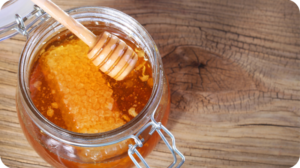Trendy diets rarely work for permanent weight reduction. That’s why there are so many diet books, and new ones being published every year. Dieters keep trying, but seldom realize permanent weight loss. The problem is that most “diets” are a temporary solution for an ongoing challenge.

The trick to healthy, long-term weight loss is not just changing what, how, and when you eat, but instituting reasonable permanent changes that you can easily integrate into your day-to-day life.
One of the healthiest dietary changes, and one that can greatly impact your pursuit of an ideal weight, is using fruit in place of snacks. An average size apple has just under 100 calories; the average regular-size candy bar? Well over double that amount—and without the other natural nutrients and vitamins fruit contains. In any case, fresh seasonal fruit is a wonderfully delicious stand-in for prepackaged, highly processed snack foods and desserts.
Fruit Rules
Of course, achieving the best results means eating specific fruit in the most efficient way possible. Here are the guidelines for using fruit to enjoy healthy, sustainable weight loss.
- Choose low GI. The Glycemic Index is an excellent indicator of the amount of fiber and beneficial dietary impact of any given fruit. The index ranks the impact on blood sugar levels of different foods (refined sugar is the baseline, at 100). Choose low-GI fruits to diminish cravings and stabilize your blood sugar throughout the day.
Generally, the more packed with fiber the fruit is, the more it will make you feel full with a relatively low calorie count. Fiber also binds up fructose. That means, the more fiber the fruit has, the lower it’s glycemic index rating.
Glycemic Index Rankings of Common Fruit
Fruit GI
Grapefruit 25
Apples (on average) 39
Strawberry 40
Orange 40
Pear (on average) 43
Grapes 59
Bananas 64
Ripeness also plays a role. For instance, a slightly green banana will have a significantly lower GI than an overripe banana.
- Whole, not juice. Whole fruit is better than juice for weight loss. Fruit juices have far less fiber to fill you up, and much more readily available sugar that can fuel cravings. Processed juice often has added sugar, and may include preservatives and other additives that won’t do much for your overall health.
- Careful with canned. Both fruits and vegetables hold their nutrition well when canned. However, read labels closely if you’re buying canned fruits; many are packaged in sugary syrups or with added sugar. This is usually less of a concern with frozen fruit.
- Fresh, rather than dried. Dried fruit can be a handy, on-the-go snack. Unfortunately, many dried fruits—including raisins, apricots, and cranberries—are often treated with sugar syrup to sweeten them. Dried fruit is also usually less filling than it would be eaten whole.
Easy Fruity Weight-Loss Meals
Try these super-tasty, easy to make treats for meals or snacks that can keep your stomach full and your weight-loss goals on track.
- Great grapefruit. This low glycemic citrus gem is packed with vitamins A and C, and a grapefruit half is a mere 39 calories. One caveat though; grapefruit and grapefruit juice can interfere with the absorption of certain prescription drugs. Top a cut grapefruit half with ½ teaspoon of real maple syrup—or sprinkle with allulose or erythritol sweetener—and stick it under the broiler to caramelize the sweetener. This is a super-filling candy bar substitute or anytime snack.
- Berry good oatmeal. Spruce up plain morning oatmeal with a handful of mixed berries, an apple half coarsely chopped, 1 tablespoon of flax seeds, and 1 teaspoon maple syrup. You’ll be taking in a day’s worth of healthy fiber and be full till lunch!
- Peanut butter apple slices. Cut three thin slices of tart apple (such as Granny Smith), use a fork to spread a thin layer of organic peanut butter on each one, and sprinkle with chia seeds. It’s the perfect meal-ending dessert.
Substitute fruits for processed foods and sweets and you not only boost your weight loss potential, you can also reduce your blood pressure, minimize gastrointestinal issues, and even lower cancer risk. Lastly, keep in mind that what you eat is coupled with what you do in any weight loss plan. No matter what fruits you introduce into your daily diet, make sure you get at least three hours of brisk activity each week, spread over five days. The more active you are, the quicker you’ll lose weight.
Share some love if you like this post!





